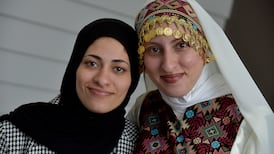The rising cost of living, homelessness and housing insecurity have been identified as challenges in supporting children’s learning in both urban and rural schools, a new study examining childhood experience has found. It also shows exposure to structural inequality in early years is central to educational success.
The findings are contained in the eighth instalment of the Children’s School Lives (CSL) study which considers various factors shaping children’s learning experiences and “capacities to flourish” both now and as adults.
Produced by the UCD school of education, it is informed by data collected across 189 primary schools, with a focus on 13 classrooms and 28 case study children, and with detailed interviews of parents, teachers and principals. The previous seventh report looked at wellbeing and children’s feelings about themselves.
The latest report, focusing on equality and the impact of social background, found 54 per cent of children are classified as medium affluence, 20 per cent as high affluence or well-off, and 26 per cent as low affluence or poor.
‘Bloodied but not bowed’: Connemara’s Misunderstood Heron food truck announces sudden closure
Leaving Cert student killed after car entered river in Co Tipperary named
Catriona Carey and brother Jack Carey sent forward for trial on company law charges
Protest held as US judge arrested and charged with obstructing immigration operation
“That Irish society is stratified by social class is evident in the demarcation of primary schools by their socio-economic status, with approximately one third of schools in the CSL sample classified as Deis, a key marker of social deprivation and disadvantage,” the report said. “Yet social disadvantage is not confined to Deis schools, with approximately one fifth of children in non-Deis schools classified as poor.”
Participation in extracurricular activities was found to be influenced by wealth. In second class children from well-off families were significantly more likely to participate in activities such as going to cinemas and museums, visiting the library, taking various lessons and playing team sports.
In the cohort of older children tracked from second class in 2019 through sixth class last year, levels of anxiety were not influenced by levels of wealth and poverty or the type of school attended. However, in the younger cohort – junior infants to second class over the same period – children in Deis schools expressed higher anxiety, and those from poorer families were significantly more likely to “worry about what is going to happen”.
In the most marginalised communities issues that emerged among children and parents included social stigma, urban degradation and constraints on children’s space, although a “strong sense of attachment to place and intergenerational family networks was also evident”.
The impact of drug addiction, food poverty and trauma among “forgotten’ communities” was raised by staff in the most socially deprived schools.
“Central to educational success is having the resources which equip and support a child to engage with their learning,” the report noted. This not only includes income and material wealth but also knowledge and understanding of how the education system works, as well as having access to social networks of support.
“In the absence of economic, cultural and social resources children struggle, coping not only with the impact of economic insecurity – that increasingly includes food and housing insecurity – but also with the experience of social life on the margins.”
- Sign up for push alerts and have the best news, analysis and comment delivered directly to your phone
- Join The Irish Times on WhatsApp and stay up to date
- Listen to our Inside Politics podcast for the best political chat and analysis















